Nixon Resigns, Ford is President: 50 Years Ago, August 9, 1974
On August 8, 1974, President Richard Nixon sat behind his desk in the Oval Office waiting to go on live television. He was about to announce that he would be resigning from the presidency the next day. He was the first and last President of the United States to do so. The moment was being recorded on video as his personal White House photographer of six years Ollie Atkins wanted to get some pictures. In their exchange the president said, “Ollie. Only the CBS crew now will be in this room during this, only the crew.” Ollie seems to push back, Nixon tells him, “No, no there will be no picture after the broadcast. No. You’ve taken your picture. Didn’t you take one just now? That’s it! Because you know we didn’t let the press take one. So you’ve taken it. Just take it right now, this is right after the broadcast, you got it? C’mon!” I found this tape in the Nixon Library. I knew Ollie had limited access during his tenure as Nixon’s photographer, but this underscored it. I felt bad for him.
The next day was historic, not a word I use lightly. I was on the South Lawn of the White House shooting for TIME Magazine as President Nixon and First Lady Patricia Nixon walked out of the Diplomatic Reception Room of the Executive Mansion to his waiting helicopter. He was accompanied by Vice President and Mrs. Gerald R. Ford, They said goodbye at the steps of Marine One, and Mrs. Nixon boarded the aircraft. President Nixon walked after her to the top step, turned and momentarily looked at the South Portico of the White House. It was the last time he would see it as president. His lips pursed he gave a curt wave.
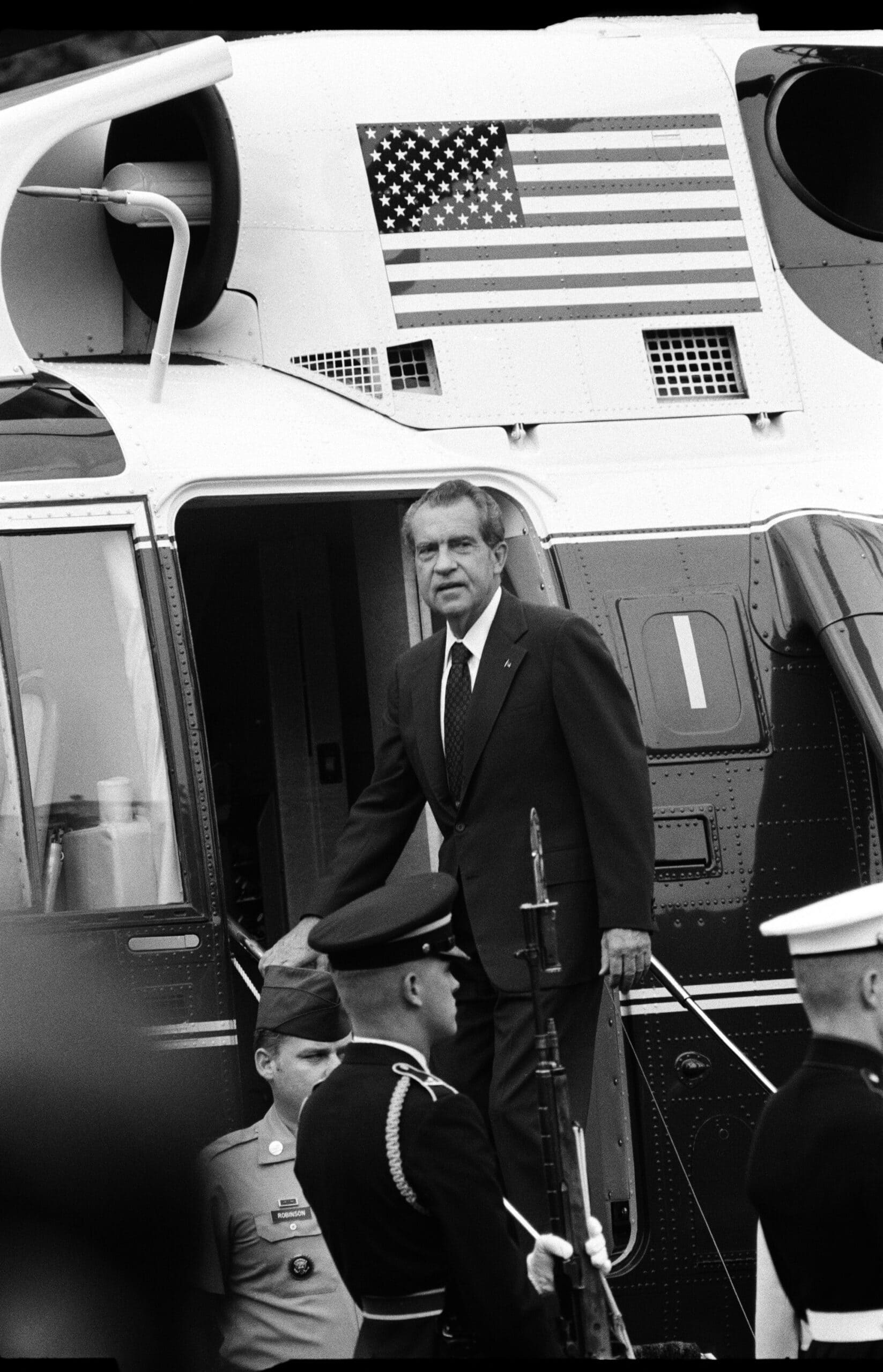

Nixon looks at the White House for the last time as president, then waves goodbye
He continued waving as members of his staff started applauding him. That triggered an old political rally response. Nixon put both arms up and gave a double V-sign to the cheering crowd. Except it wasn’t a rally, but one of the darkest days in American history.

The soon-to-be-president Ford waved at Nixon through the helicopter’s window, then he and Mrs. Ford turned and walked away.
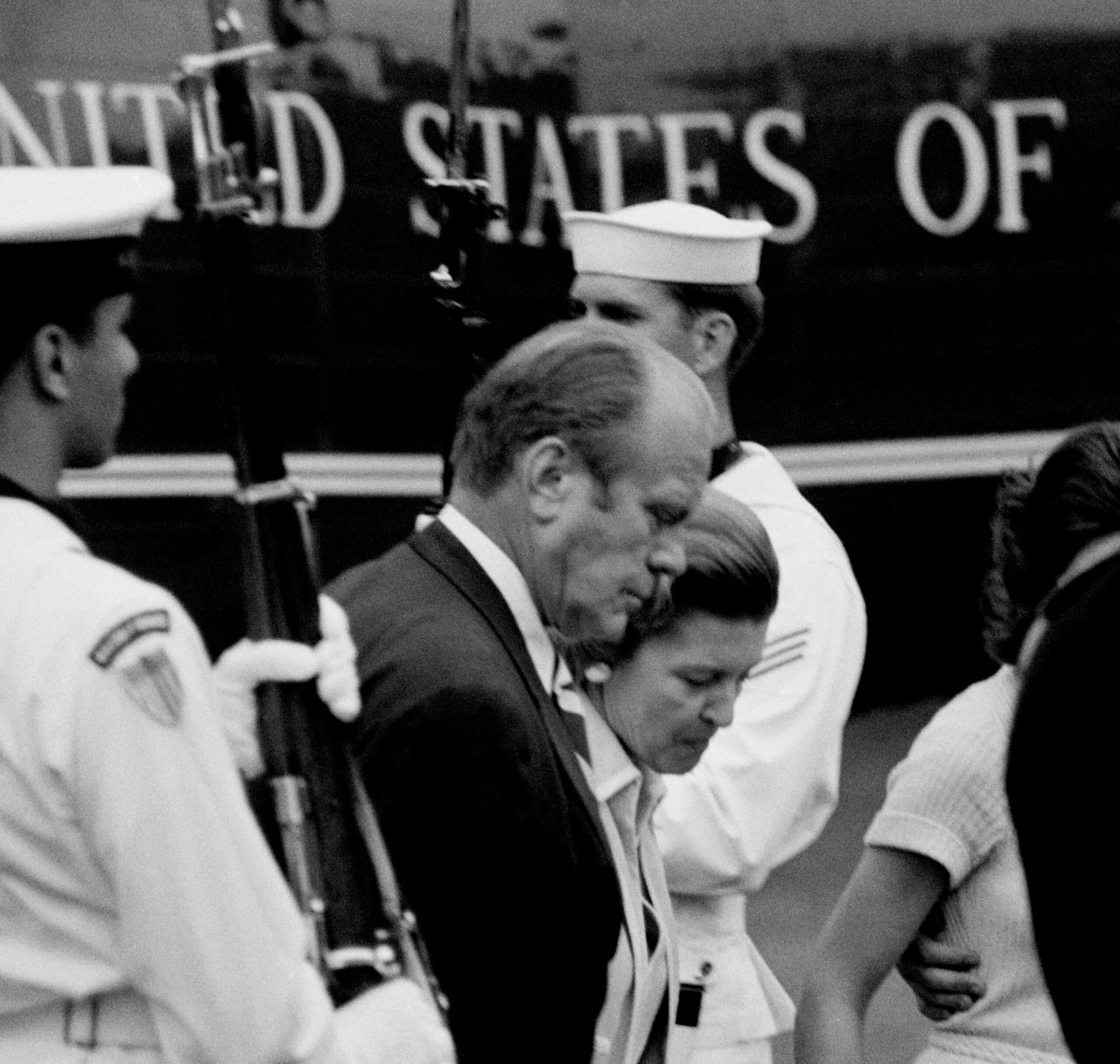
Along with the Nixon’s daughter Julie and son-in-law David Eisenhower, grandson of the 34th president. They watched as the helicopter took off and flew by the Washington Monument as it receded in the distance. President Ford told me, “We couldn’t help but feel sorry for a very dear friend and his wife . . . but at the same time, to be honest, I was anxious to turn around, walk in, and get started on my new responsibilities.”

A short time later, at 12:05 pm in the East Room of the White House, with Mrs. Ford holding the family bible, Gerald R. Ford was sworn as the 38th President of the United States by Chief Justice of the Supreme Court Warren Burger.
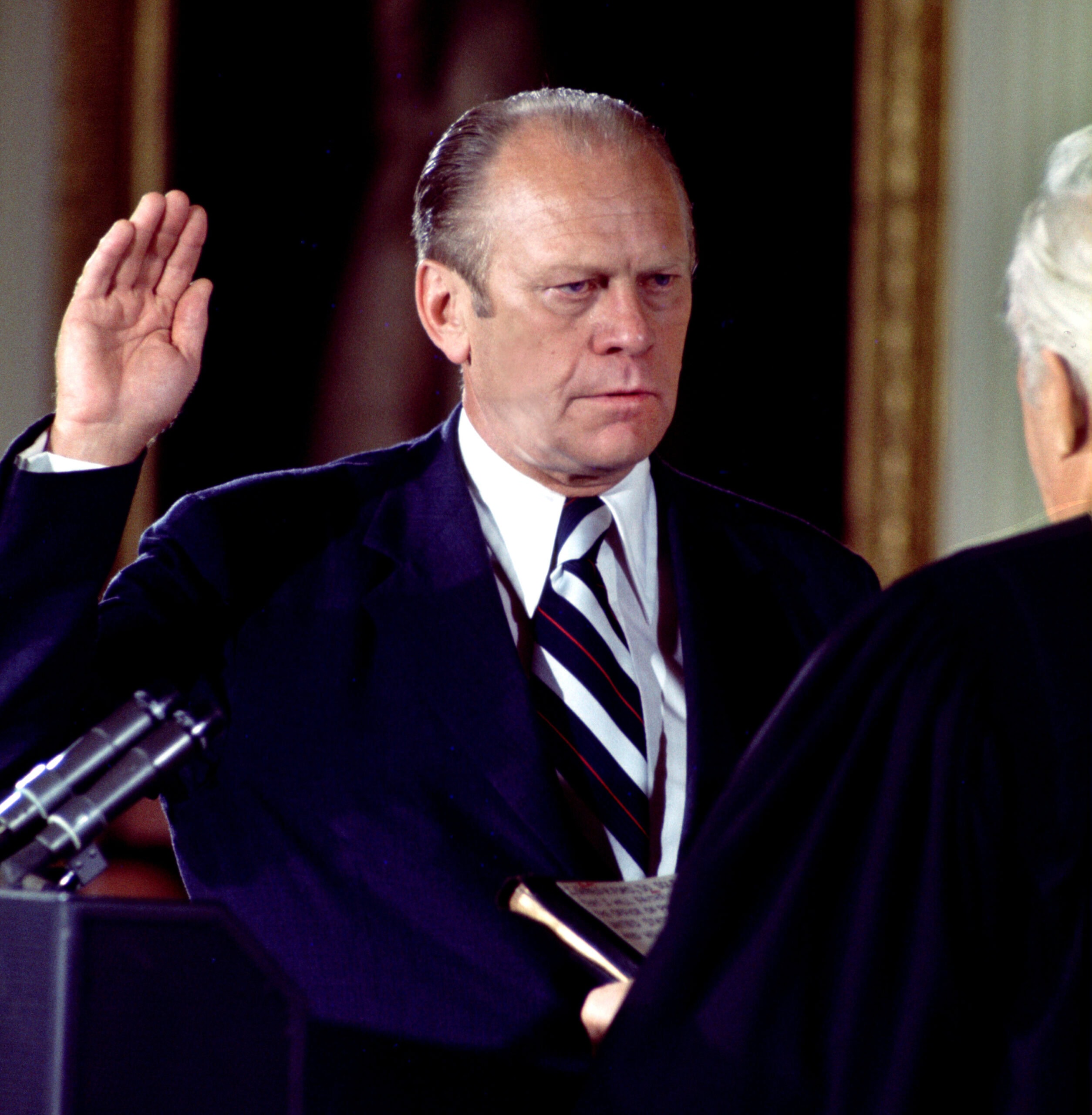

In his address upon taking the oath of office as president he said, “ . . . I assume the Presidency under extraordinary circumstances never before experienced by Americans. This is an hour of history that troubles our minds and hurts our hearts.” He went on to declare, “our long national nightmare over.” I caught that moment. He looked grim but resolved to deal with what lay ahead.

That night I was invited to the Ford’s modest home in Alexandria where I took photos of the new First Family in their humble abode. (Because of the abrupt transition they wouldn’t move into the White House for several days). They had a quiet celebration with a few close friends. Mrs. Ford and the new president toasted one another. “Here’s to our new life, god help us,” she said with a smile.

The president asked me to stay after their friends left. Even though the subject had never come up, I believed that he wanted to talk to me about becoming his chief White House photographer. I had given it a lot of thought in case he asked but wasn’t sure I wanted the job. Knowing that Nixon’s photographer Ollie Atkins had been given limited access, I couldn’t see myself in a similar role. There was no way I would sit outside the oval office door waiting for some secretary to tell me to go in, “but only for a minute.” Like my hero Yoichi Okamoto who was President Lyndon Johnson’s photographer (and the first civilian White House photographer), I wanted the run of the joint.
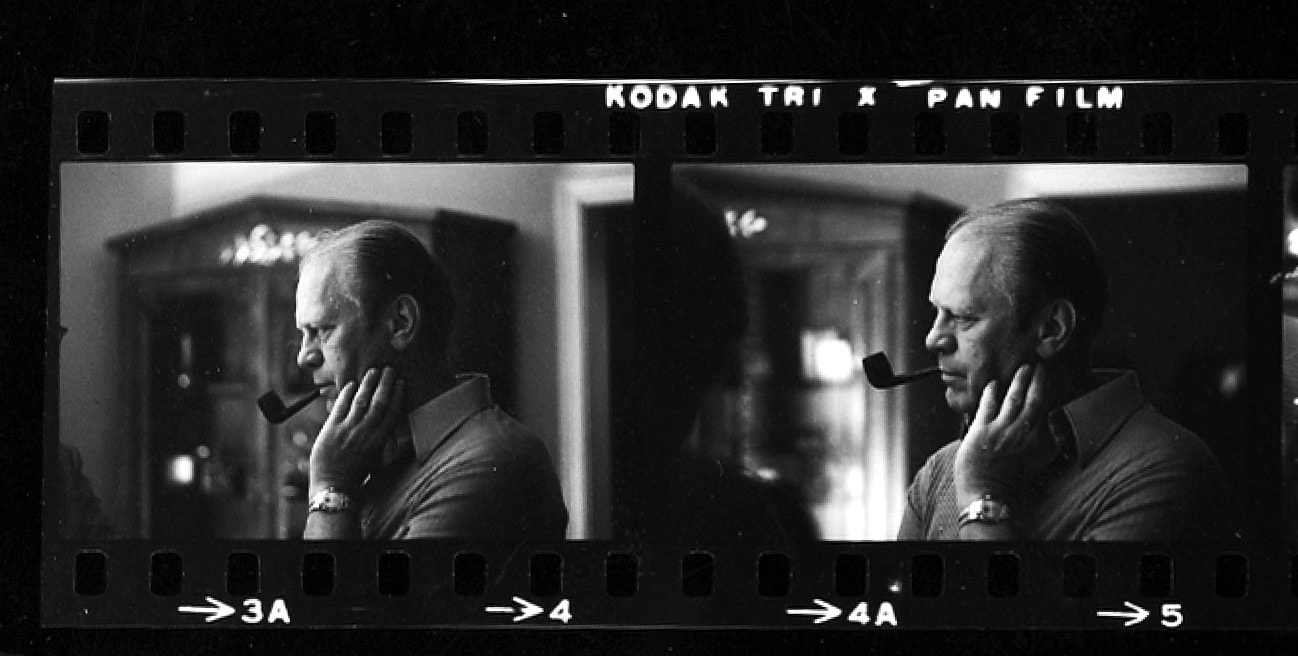
The president and I sat together on a couch in their living room, he was smoking his pipe. We talked about the day's events and then he asked me if I would like to work for him. Even though I suspected this might happen I found the whole idea of him offering me a job him on the same day that he became President of the United States right out of a Twilight Zone episode! After all, I was only 27 years old and a kid from a little lumber town in Oregon. “Shouldn’t he be talking to Henry Kissinger?” I thought. But what I told him was that I would love to do that, but with a couple of requests. One is that I would report directly to him, and the other is that I have total access to everything going on in the White House. He stopped smoking his pipe. Oops, I probably overstepped. I thought about what I would tell my parents. “The president offered me a job and I basically told him to shove it.” Good going kid. But President Ford started laughing and said, “You don’t want Air Force One on the weekends?” He thought my demands were not only reasonable, but that’s how he wanted me to roll. He said would talk to chief of staff Al Haig to make sure Ollie would be given the news before we finalized the deal. Yet another flash of his humanity.
"Dave," he said as I was preparing to leave, "if you work for me, won't it be viewed badly by your colleagues? I mean, after what's happened the last few years." I said, and I will admit to having tears in my eyes, "Mr. President, if you're the kind of president I know you're going to be, my friends in the business, most of whom you know, will be proud to have me work for you.”
The following morning I photographed the new president leaving his Alexandria home as he headed for his first full day at the White House. I went back to my office at Time and was sitting in the mail room with my feet on the desk talking to my good friend and fellow photographer Dave Burnett. I was telling him what had happened the night before when the phone rang. The switchboard operator said in a quavering voice, "It's the President for you, Dave.” I jokingly told her to have him call back. “He's on the line!” she practically screamed at me. It was him all right, still making his own calls. “How'd you like to come to work for me?" Ford asked. “When do you want me to start?" was all I could think to say. “Get over here right away," he responded, "you’ve already wasted a half a day of the taxpayers' money.” Slamming the phone down after he hung up, I jumped up and yelled to Burnett, "Holy shit, it’s happening!”
I hurried across Lafayette Square to the White House where I would serve as President Ford’s chief photographer for the next two and a half years, the third civilian to hold that position. President Ford was good to his word. I had the run of the place both upstairs and downstairs. I finally ended up where every photographer wants to be--in the room where it’s happening. Being the president’s photographer was one of the best assignments of my life, and I will always be grateful to the Fords for sharing their lives in the White House with history and with me.
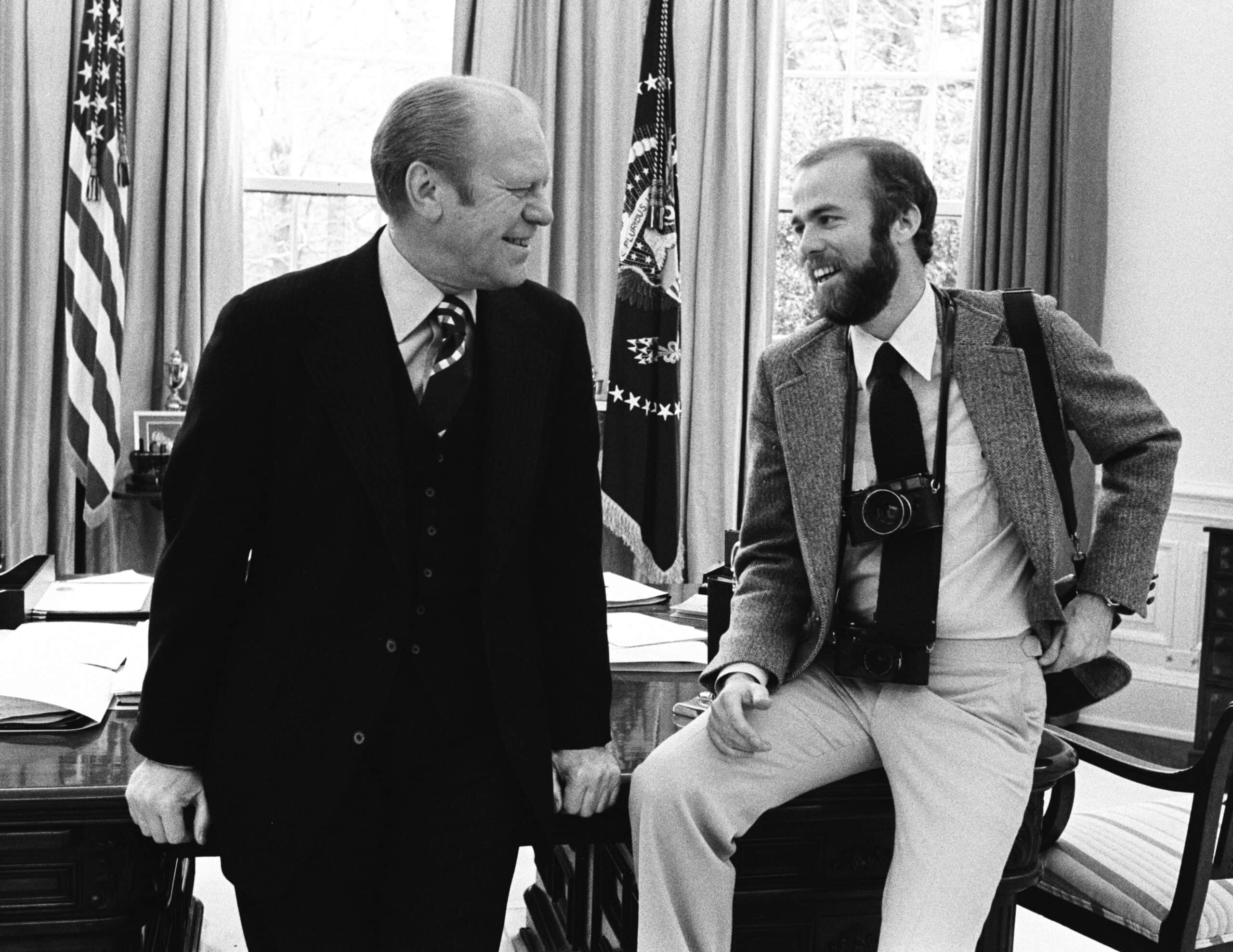

Leave a Reply
You must be logged in to post a comment.